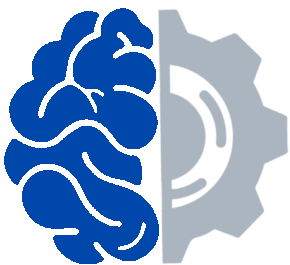Swarming and Trading Algorithms
My friend, Mel White, was kind enough to take on a question that has been buzzing around in my head for awhile, particularly after the Bio-Inspired Swarms panel at Human Factors and Ergonomics Society annual conference (Mike Goodrich’s visualizations were amazing). While my question and Mel’s analysis largely boils down to a small thought experiment about resiliency, it should be of interest.
More after the jump.
First, a little background, for those unfamiliar with the advent of “automated trading“, particularly of the high-frequency sort (Another lovely primer here). While IBM produced the first trading algorithm capable of outperforming human traders circa 2001, the mathematics have developed into a large scale business. Trades are carried out on the millisecond level, meaning that thousands of trades can take place between algorithms in a matter of seconds.
High frequency trading is definitely a booming business. In 2009, HFT accounted for 73% of all US equity trading volume. In 2010, Sergey Aleynikov was sentenced to 97 months in prison for allegedly selling Goldman Sachs trade secrets; he was later acquitted by the US Court of Appeals Second Circuit.
Reactions to HFT have been mixed: Recently, the French finance minister proposed, along with other banking reforms, a ban on high frequency trading. Knight Capital (trader of 17.3% of US equities in NYSC) hemorrhaged $440 million dollars in half an hour, due to a faulty trading algorithm. Even Stephen Colbert has jumped on board to satirize the practice.
Regardless, these trading algorithms are closely guarded trade-secrets and serve as the new face of investing. What concerns me are the possible implications for market resiliency and the possible problem of multiple algorithms operating with similar rules, but little actual planning for interaction with each other; could “swarming” behavior affect market stability, or to put it more exactly:
Given the interesting behavior of bio-inspired swarms in regard to grouping at resource locations, how would this behavior affect the actions of automated trading algorithms as they are currently being used. While separately designed, shared logic may result in very similar resource identification and behavior.
On Black Monday, in 1987, many firms, utilizing the same risk prevention algorithms, dumped their stocken masse, leading to one of the largest percentage market declines in history.
The real question is an almost ecological one, is the market’s algorithmic diversity large enough to prevent a similar error from occurring? Could another instance of a glitch like Knight Capital’s start a feeding frenzy that might level markets in the space of minutes, rather than hours?
Mel’s analysis really hits the base model of the situation, but I wonder about the particular impact of information on the whole system. In the advent of automatic trading, it becomes difficult to identify what is a human actor and what is a computer. Markets are powered by information, hints of potential supply shocks or increases in demand, but if algorithms are presupposing that the other players are possessed of information they don’t have, the stakes become largely a bluffing game.
In Mel’s model, agents can clearly identify each other, but in this case, the only actual information about the actions of others are delivered in the form of market information, and with companies competing to get themselves closer and close to the incoming stream of market information, there’s a distinct element of information lag between players which may benefit a few well-placed firms.
So, this wicked problem, in particular, is a clear example of a game played with imperfect information, with little knowledge of the other players, and a distinct time difference in the playing field.
Perhaps the best way to address it is to consider, on small-scale simulations, what the range of variation in strategies causes in regard to differences in information and timing between algorithms. Then empirical observation could identify possible patterns and conditions which lead to brittle systems and their outcomes.


